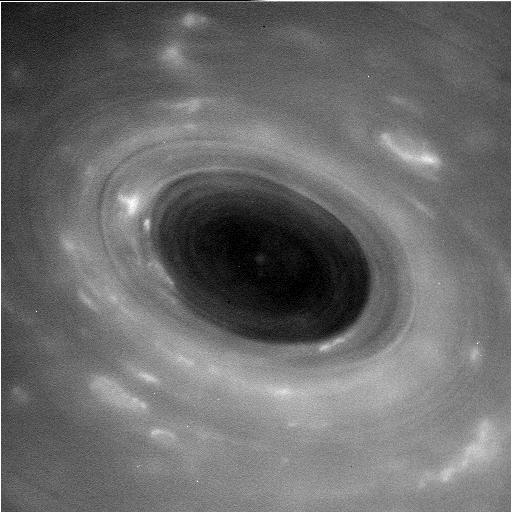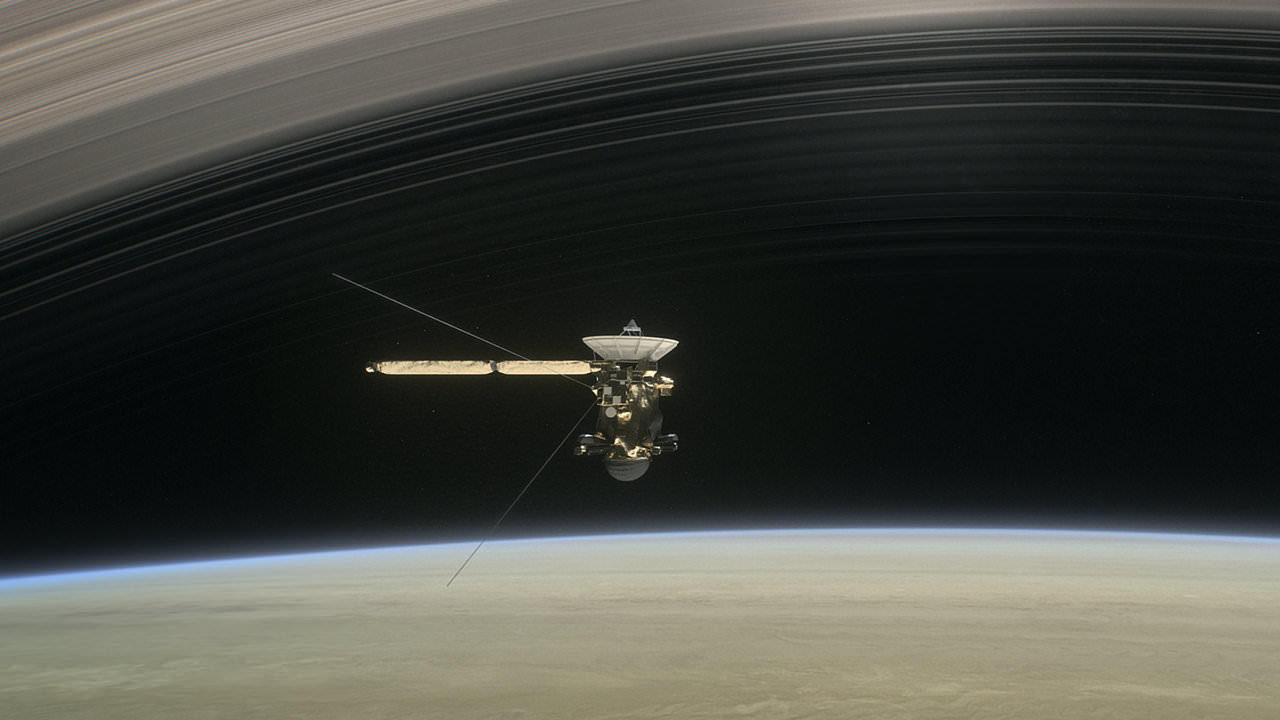One down, twenty-one to go! The Cassini spacecraft survived the first dive through the narrow gap between Saturn and its rings, and is now back communicating with Earth.
“No spacecraft has ever been this close to Saturn before. We could only rely on predictions, based on our experience with Saturn’s other rings, of what we thought this gap between the rings and Saturn would be like,” said Cassini Project Manager Earl Maize of NASA’s Jet Propulsion Laboratory in Pasadena, California. “I am delighted to report that Cassini shot through the gap just as we planned and has come out the other side in excellent shape.”
It was a long day for Cassini scientists and engineers at the Jet Propulsion Laboratory while the spacecraft was out of contact for 20 hours during this first dive, signaling the beginning of the end for the mission.
Cassini, running out of fuel, is heading toward its ultimate death by crashing into Saturn on September 15, 2017. But during the next few months, Cassini will make twenty-one more passes through the gap, and in doing so, further our understanding of how giant planets, and planetary systems everywhere, form and evolve.

Project Scientist Linda Spilker said Cassini will be able to make close up measurements of Saturn and its rings to finally help us understand the mass and internal structure of Saturn. And the images should be absolutely stunning.
Contact was lost as the ring-plane crossing started at 2 a.m. PDT (5 a.m. EDT) on April 26. NASA’s Deep Space Network Goldstone Complex in California’s Mojave Desert acquired Cassini’s signal at 11:56 p.m. PDT on April 26, 2017 (2:56 a.m. EDT on April 27) and data began flowing at 12:01 a.m. PDT (3:01 a.m. EDT) on April 27.
Cassini was programmed to collect science data while close to the planet. As a protective measure, the spacecraft used its large, dish-shaped high-gain antenna (13 feet or 4 meters across) as a deflector shield, orienting it in the direction of oncoming ring particles. This orientation put the spacecraft out of contact with Earth.
“In the grandest tradition of exploration, NASA’s Cassini spacecraft has once again blazed a trail, showing us new wonders and demonstrating where our curiosity can take us if we dare,” said Jim Green, director of the Planetary Science Division at NASA Headquarters.
We did it! Cassini is in contact with Earth and sending back data after a successful dive through the gap between Saturn and its rings. pic.twitter.com/cej1yO7T6a
— CassiniSaturn (@CassiniSaturn) April 27, 2017
The gap between the rings and the top of Saturn’s atmosphere is about 1,500 miles (2,000 kilometers) wide, and Cassini came within about 1,000 miles (1,600 kilometers) of Saturn’s cloud tops.
The best models for the region suggested that if there were ring particles in the area where Cassini crossed the ring plane, they would be tiny, on the scale of smoke particles. However, the spacecraft was traveling at speeds of about 77,000 mph (124,000 kph) relative to the planet, so small particles hitting a sensitive area could potentially have disabled the spacecraft.
The spacecraft is being destroyed after a successful 13 year mission at Saturn, as NASA needs to follow the protocol of planetary protection, and not allow a spacecraft with possible microbes from Earth to crash into a potentially habitable moon such as Enceladus or Titan.
Cassini’s next dive through the gap is scheduled for May 2.
You can see the Cassini raw images page here, but look for more processed images to be available soon.
Jason Major put together this animation of some of the first images from Cassini’s close pass:
Animation of images from @CassiniSaturn's close pass over #Saturn on April 26 pic.twitter.com/yklpSXJwrS
— Jason Major (@JPMajor) April 27, 2017
Source: JPL


Hard to estimate, but it’s possible that the most important discovery of the Cassini mission will soon occur? I wouldn’t put it past this intrepid probe to do just that since this mission has a history of great performance and doing the incredible. GO Cassini!
that vortex looks… intimidating.
http://stream1.gifsoup.com/webroot/animatedgifs/752550_o.gif